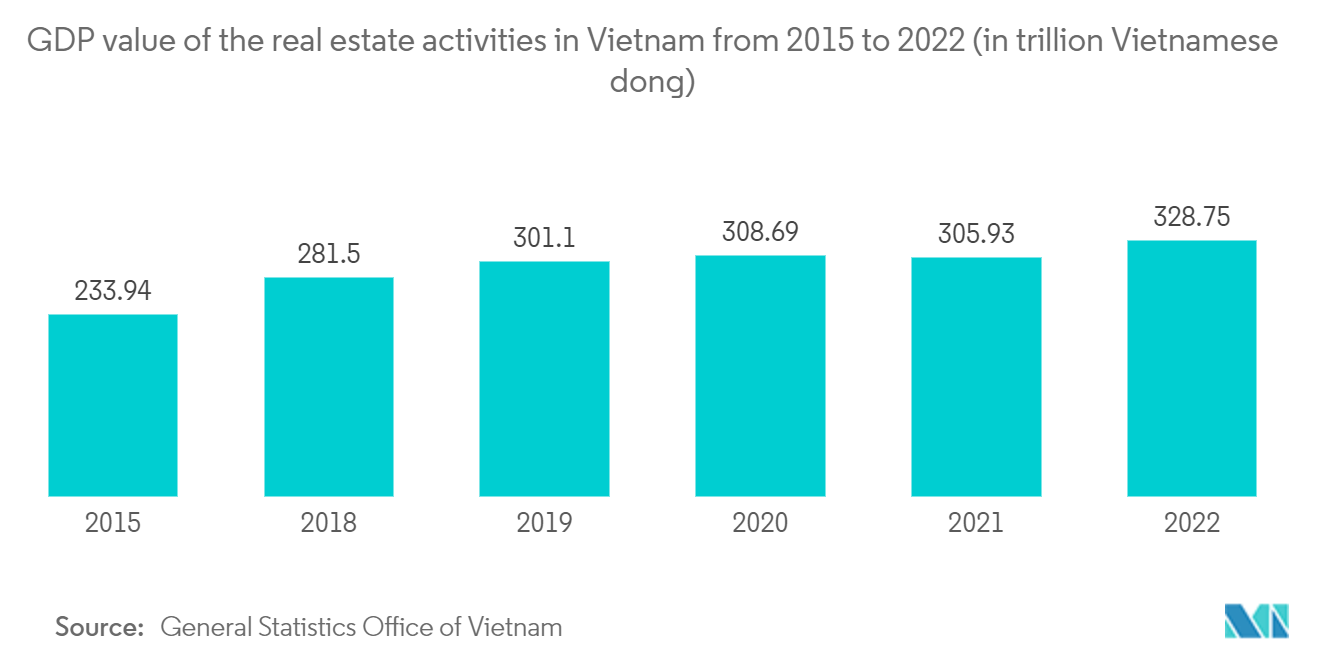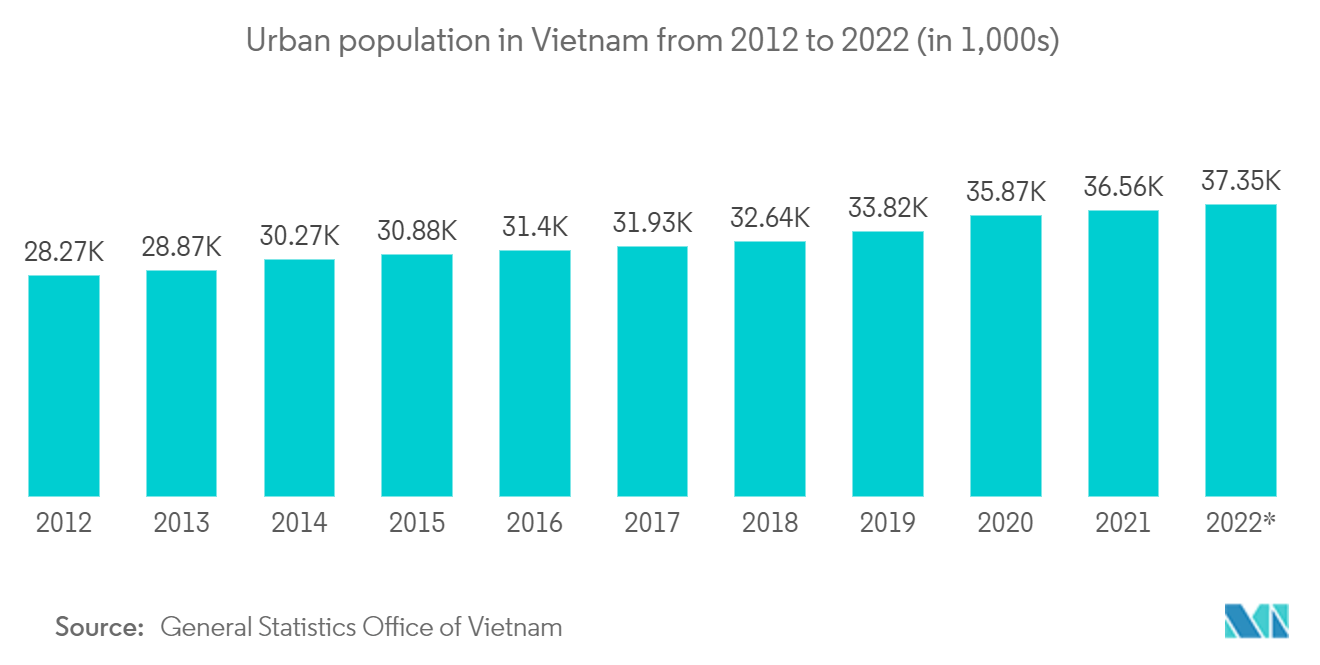Market Trends of Vietnam Residential Real Estate Industry
Rising Government Initiatives and Social Housing Development Policies
- The National Assembly and the Government of Vietnam propagated many policies and mechanisms to develop social housing to support disadvantaged and low-income people in urban and rural areas. The Vietnamese government's key initiatives include the housing law and other official directives to provide support and incentives for the development and management of social housing. It also has openness for investment by foreign individuals and organizations in social housing development.
- HCMC council implemented projects to increase the sources of pure land in urban and suburban areas and retrieved about 200 hectares (initially in 2008) of the site from the inner city to the suburban. The expansion of the availability of clean land is likely to increase the radius of social housing from the central area.
- According to the MoC, most social housing projects would be implemented in areas with large industrial parks, including Long An (310,000 units), Bac Giang (285,000), Bac Ninh (96,2 7), and Binh Duong (8,000). Social housing projects are also considered a priority in large urban cities such as Hanoi (136,000 apartments), Ho Chi Minh City (130,000), Haiphong ( 5,355), and Danang (19,360). KM assumed the implementation of the plan in stages, when approximately 700,000 apartments should be completed in the period 2021-2025, i.e., 5 % of the total demand, and 1.1 million apartments in 2025-2030, i.e., 85%.

Rapid Urbanization is Supplementing Housing Demand
- Urbanization will be an important driving force for rapid and sustainable socio-economic development in the future, and urban areas will make up the largest part of the country's economy in the coming years. All party committees and party members are therefore called to focus on the planning, construction, management, and sustainability of Vietnam's urban areas by 2030.
- The resolution also sets specific targets, such as the rate of urbanization reaching at least 5 percent by 2025 and more than 50 percent by 2030. in the country by 2025 and around 1.9-2.3 percent by 2030. The nationwide number of built-in areas will reach 950-1000 by 2025 and approximately 1000-1200 by 2030.
- The share of the urban economy in the gross domestic product will be about 75 percent by 2025. 85 percent by 2030. In addition, the level of urbanization in ASEAN and Asia is estimated to be medium to high by 2045.


